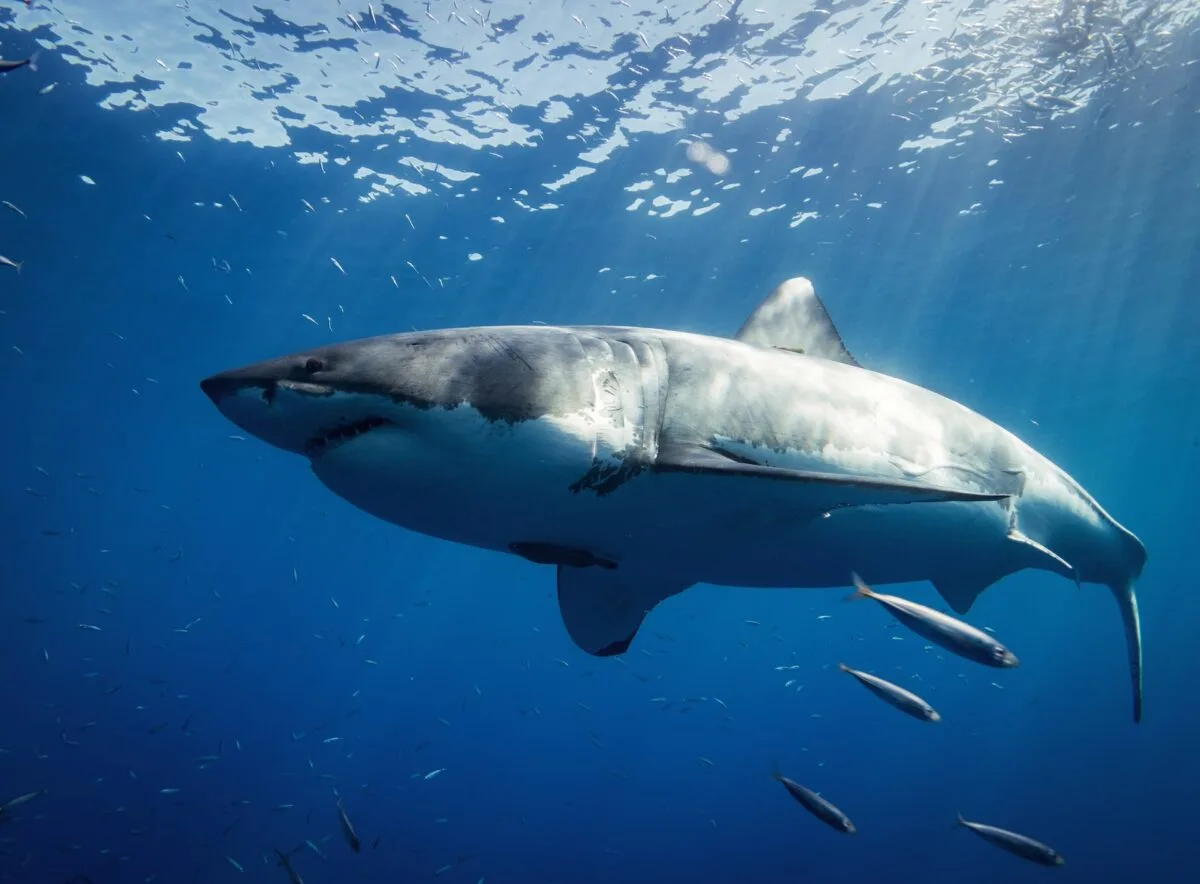Sharks of all types are some of the most intriguing and majestic creatures ever to inhabit this planet. But if you’ve been paying any attention to things happening in the aquarium industry, no doubt you’ve heard that no aquarium has a great white shark and has succeeded in keeping it in captivity.
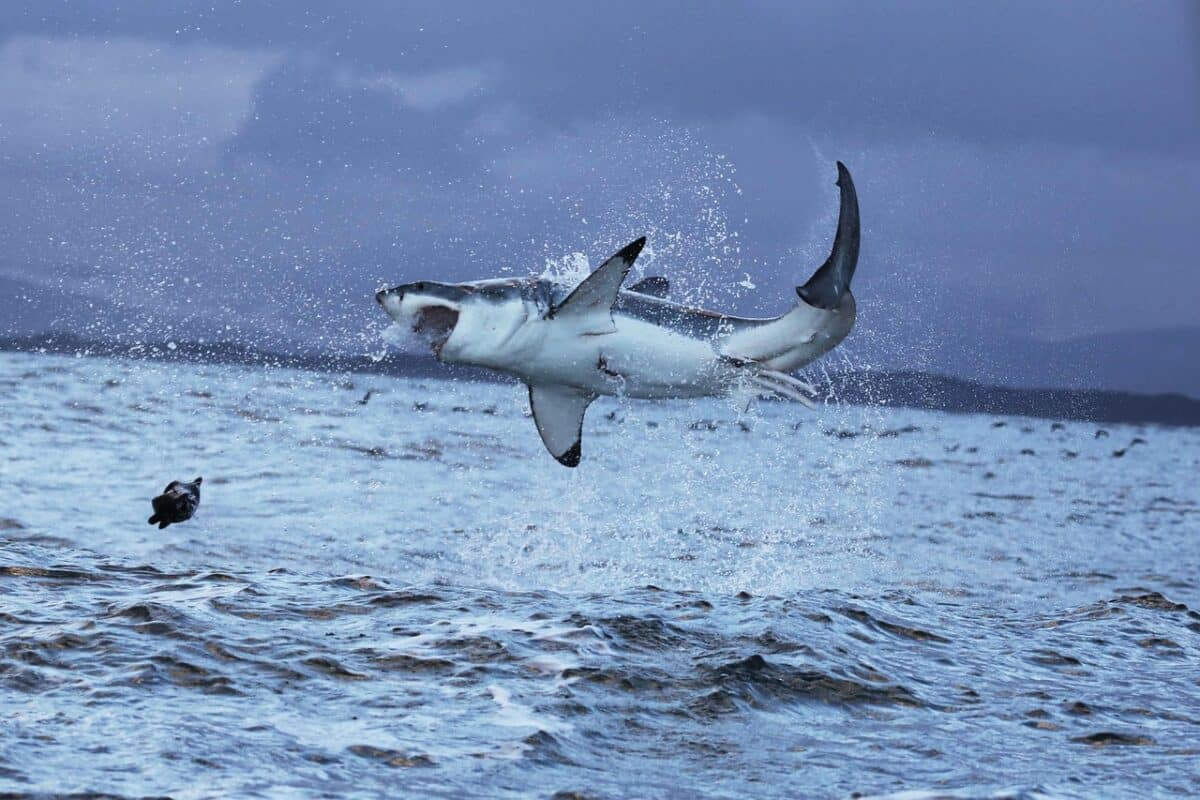
Let’s dive deep into why it’s so tricky for aquarists to keep Great White Shark. We will discuss everything from their unique biology and behavior patterns to the real-world implications of putting them on display.
By exploring these topics closely, we can hopefully understand more about one of nature’s greatest predators. As well as how challenging and potentially dangerous it would be to keep them contained!
Want to jump ahead? Click below
Key Points
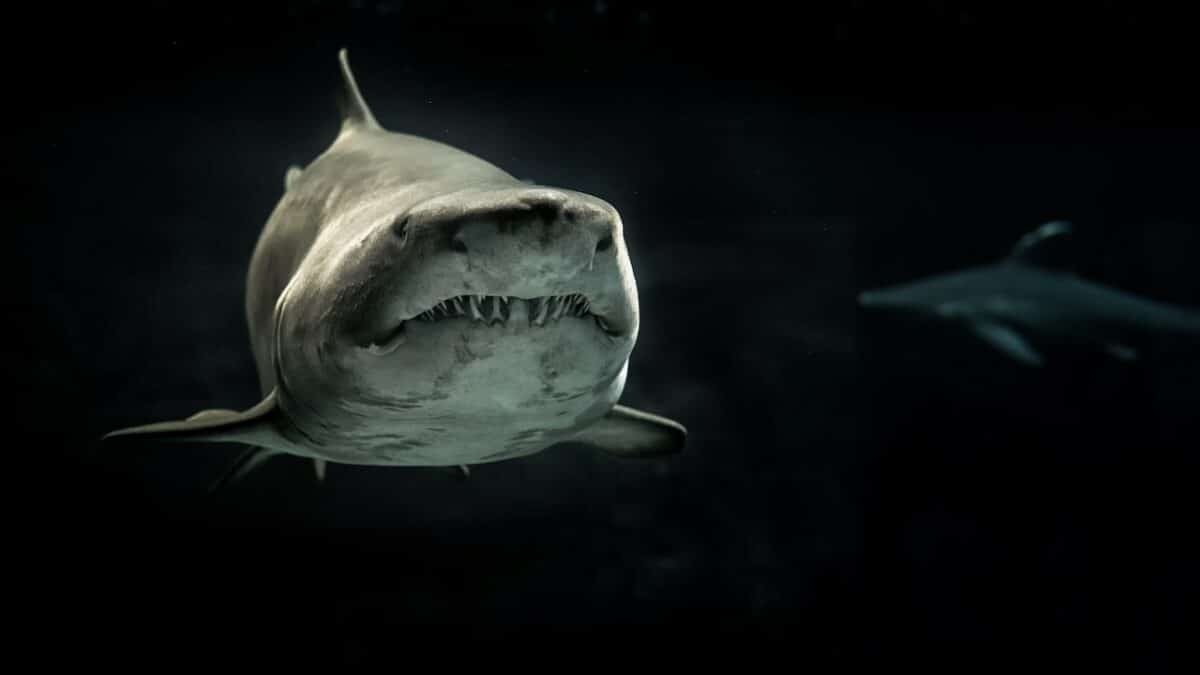
| Sharks of all types are some of the most intriguing and majestic creatures ever to inhabit this planet. But if you’ve been paying any attention to things happening in the aquarium industry, then no doubt you’ve heard |
| Great White Sharks are also biologically equipped with unique adaptations to survive in the wild. For instance, they have a high concentration of red blood cells that allows them to maintain a constant body temperature, even in cold water. |
| There are possibilities for future advancements in technology and conservation efforts that may lead to more ethical and sustainable ways to observe Great White Sharks. |
| The aquarium staff has worked diligently to provide a safe and comfortable environment for the shark, which has been on display since 2016. |
| While the idea of keeping Great White Sharks in captivity may seem alluring, we must consider the risks and realities associated with it. |
Biology Of Great White Sharks
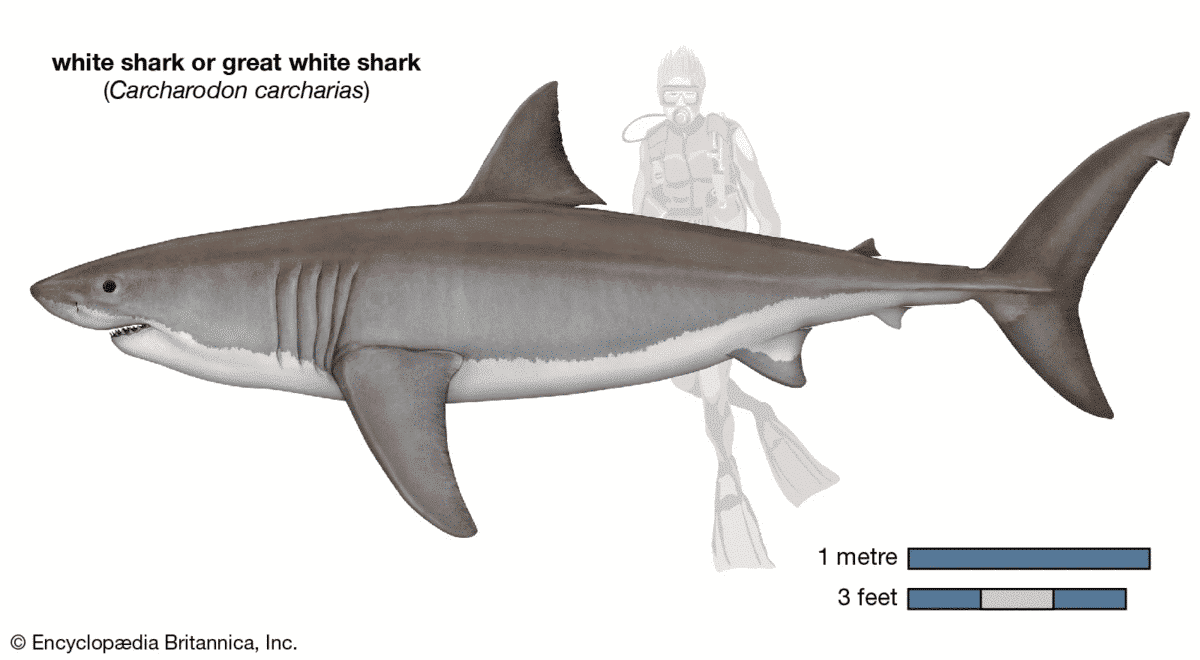
These sharks have a distinctive appearance: sleek, torpedo-like bodies, a pointed snout, and large, triangular teeth that can grow up to three inches long.
Their powerful tail fin helps them maneuver quickly through the water. Their skin is covered in tiny, serrated scales called dermal denticles, which reduce drag as they swim.
Great White Sharks are also biologically equipped with unique adaptations to survive in the wild. For instance, they have a high concentration of red blood cells. This allows them to maintain a constant body temperature, even in cold water.
Their eyesight and sense of smell are also incredibly sharp, allowing them to track prey from great distances. In addition, they have a sensory organ called the ampullae of Lorenzini. This can detect electrical signals in the water and helps them locate prey hidden beneath the sand.
However, these biological adaptations that make Great White Sharks such fearsome predators also make them incredibly difficult to keep in captivity. These sharks require much space to swim, hunt, and maintain their natural behaviors. This is often leading to stress or illness in confined spaces.
Furthermore, their sensitive physiology, inability to adapt to captive diets, and potential for aggression toward other tankmates make them unsuitable for many aquariums. Therefore, despite our fascination with these captivating creatures, Great White Sharks are best admired in their natural habitat. This is where they can swim freely and thrive in the wild ocean.
This can be done through Shark Cage diving a topic you can fully explore in our article about Great white Shark Diving and dive deeper into the industry by reading Shark Cage Diving: A sinking Industry?
Behavioral Patterns Of Great White Sharks
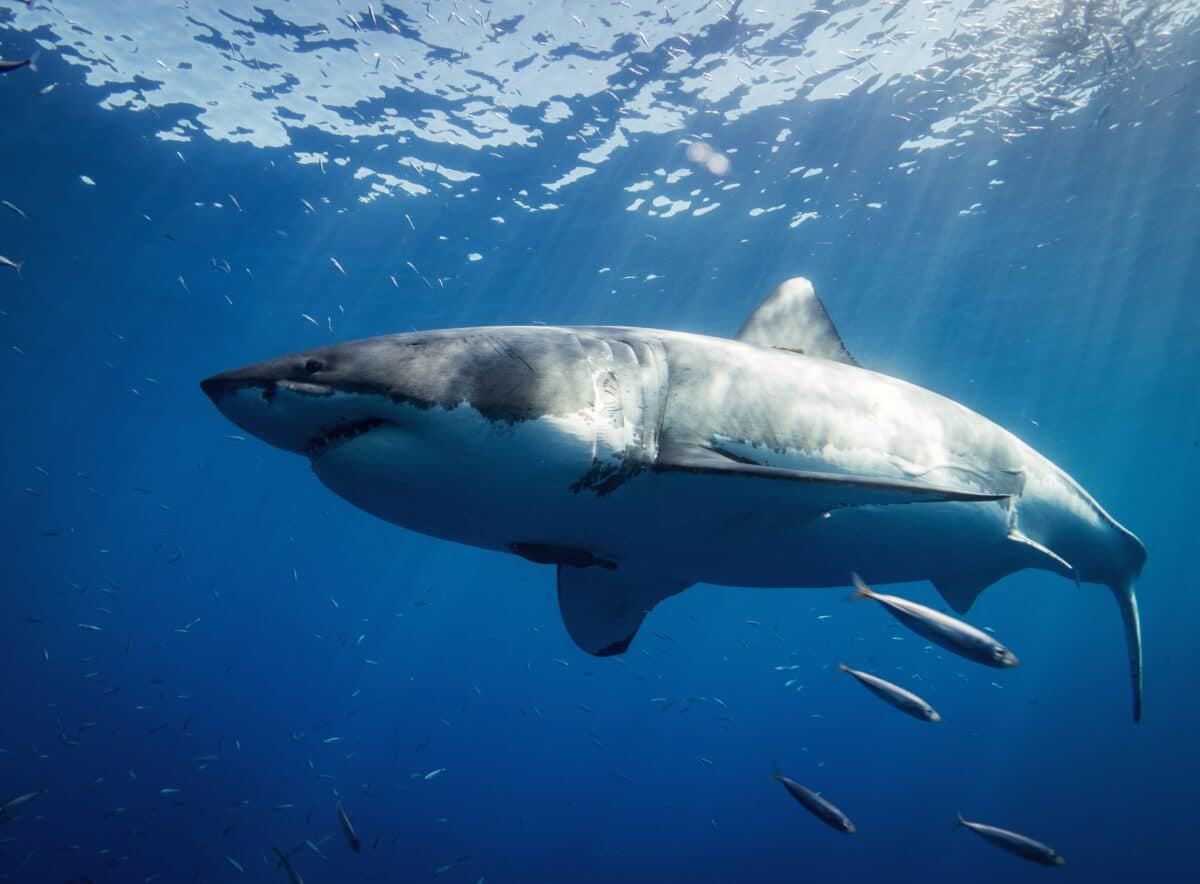
When it comes to the behavioral patterns of Great White Sharks, there is so much to explore:
- Solo Creatures
Great White Sharks are known to be solitary creatures, and they prefer to swim alone for most of their lives. If they were to be placed in captivity, they would most likely become stressed. As well as agitated due to the proximity of other sharks and animals.
- Socializing And Mating
While they may be solitary most of their lives, Great White Sharks socialize and mate with other sharks during the breeding season. They are also known for their elaborate courtship rituals, which involve a lot of swimming and chasing.
- Hunting And Feeding
Great White Sharks are apex predators. This means they are at the top of the food chain and don’t have many natural predators. They are expert hunters and have been known to follow the migratory patterns of their prey. Mainly prey such as seals and sea lions.
- Migration Patterns
Great White Sharks have a unique migration pattern that involves traveling long distances in search of their preferred food sources. They have been known to travel more than 6,000 miles in a year. Some studies suggest they may be able to navigate using the Earth’s magnetic field.
- Sensory Abilities
Great White Sharks have an incredible sense of smell. They use to detect prey from as far as two miles away. They also have an impressive electroreception system that allows them to sense the electromagnetic fields produced by other animals.
Overall, Great White Sharks are fascinating creatures with complex behavioral patterns. Keeping them in captivity would be challenging, given their natural tendency to swim alone and their need for large amounts of space to swim and hunt.
Risks And Realities Of Captivity
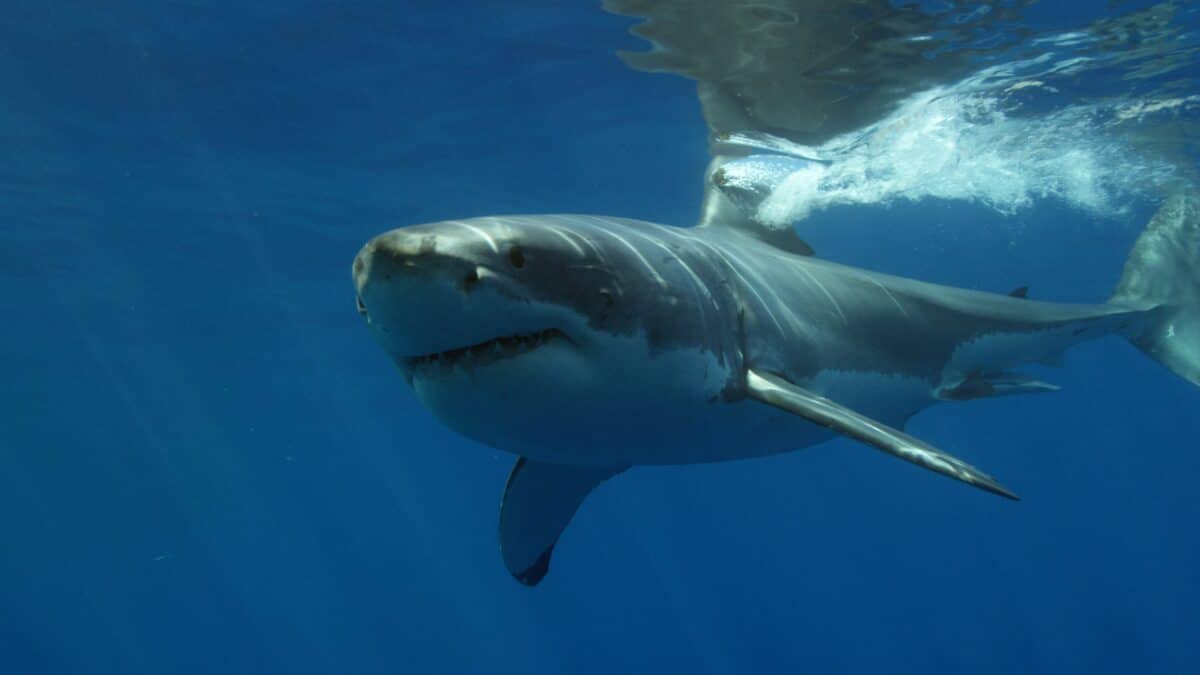
Keeping Great White Sharks in captivity may seem fascinating, especially for aquarium enthusiasts. However, weighing the risks and realities associated with such an endeavor is essential. Here are some key points to consider:
Captivity Can Cause Stress And Health Problems
Great White Sharks are apex predators that require a vast amount of space to maintain their fitness and well-being. Captivity can cause significant stress, leading to health problems such as the inability to hunt and feed properly. As well as increased susceptibility to diseases and damaged fins and skin due to constant swimming in smaller enclosures.
Escaping Or Accidental Injuries Can Be Disastrous
Few aquariums worldwide have attempted to keep Great White Sharks in captivity, and even fewer have succeeded. One of the reasons for this is the inherent danger of housing such a powerful and unpredictable animal. Escapes or accidental injuries can be disastrous for the shark and the people involved.
Public Perception And Conservation Efforts
Putting a Great White Shark in an aquarium can help the public understand the species better. But it can also create misconceptions and reduce the urgency for conservation efforts. Many people may see these animals as less scary or dangerous than they are. This can ultimately put them at risk in the wild.
Alternatives To Captivity
There are other ways to promote the conservation and education of Great White Sharks without keeping them in captivity. Sponsoring research programs that study their natural behavior and habitat needs is an option. Organizing educational programs that involve interactive experiences with live or simulated sharks in their natural environment.
While the idea of keeping Great White Sharks in captivity may seem alluring, we must consider the risks and realities associated with it. As we strive to preserve the ocean’s most majestic creatures, we must also find ethical and sustainable ways to promote their conservation and education.
Success Stories And Future Possibilities
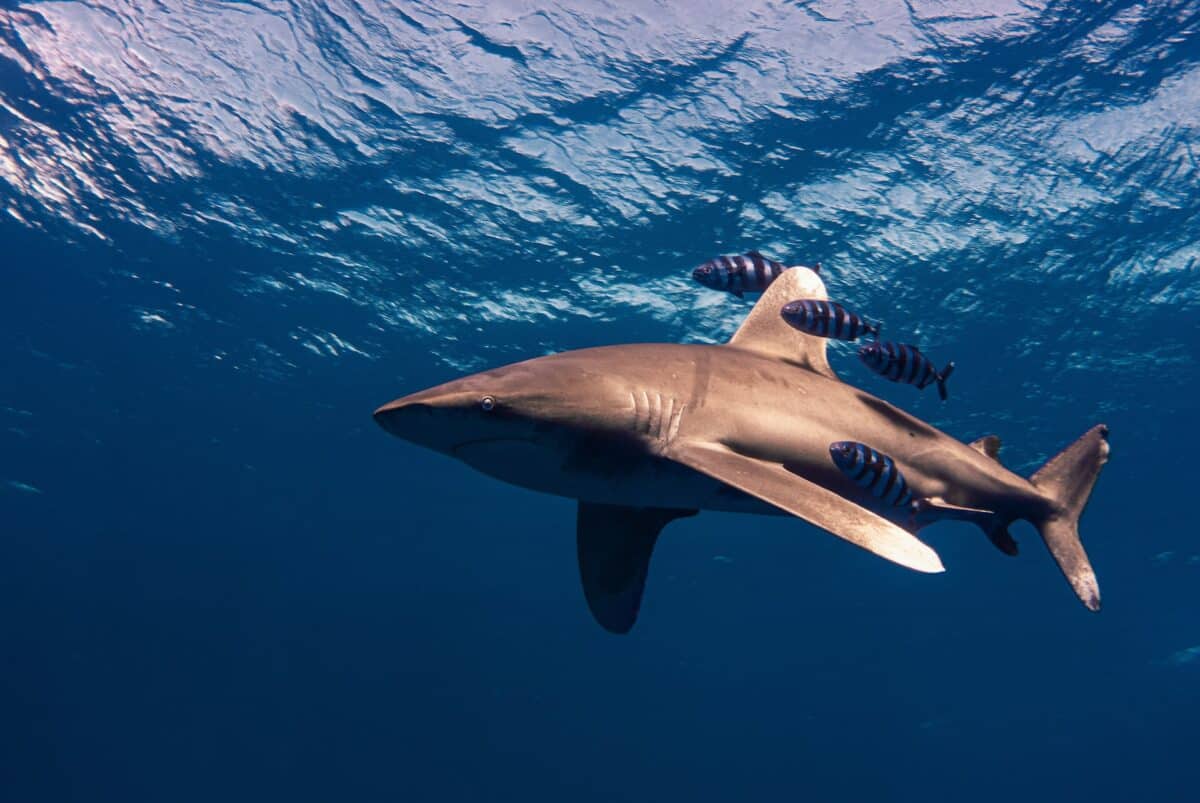
Despite the difficulties associated with keeping Great White Sharks in captivity, there are some successful examples of sharks being housed in aquariums. One of the most important success stories is the Monterey Bay Aquarium in California. In 2004, they kept a young female Great White Shark in captivity for a record-breaking 198 days. The shark was eventually released back into the wild due to concerns about her health.
Another example of Great White Sharks being kept in captivity is the Okinawa Churaumi Aquarium in Japan. They house a female Great White Shark accidentally caught in a fishing net and cannot survive in the wild. The aquarium staff has worked diligently to provide a safe and comfortable environment for the shark, which has been on display since 2016.
Conservation Efforts
Despite these successes, the consensus among experts is that keeping Great White Sharks in captivity is not ethical or sustainable. This sentiment is reflected in the fact that no new aquariums have attempted to house these animals in recent years. Many challenges are associated with keeping these apex predators in captivity, including their large size, complex social behaviors, and specialized diet.
However, there are possibilities for future advancements in technology and conservation efforts that may lead to more ethical and sustainable ways to observe Great White Sharks. One potential solution is using virtual reality technology to allow visitors to experience the thrill of swimming with sharks without harming the animals.
Conservation efforts, such as marine protected areas and sustainable fishing practices, may also help to watch Great White Sharks in their natural habitat, making the need for captivity unnecessary.
While there may be success stories of Great White Sharks being kept in captivity, it is important to consider the ethical implications and the potential harm to the animals and their natural habitat. There are promising possibilities for the future, but the best way to observe these magnificent creatures is in their natural environment.
Watch a video on Why No Aquarium Has A Great White Shark?
Wrapping Up with Why No Aquarium Has A Great White Shark?
The absence of great white sharks in aquariums is primarily due to the challenges posed by their unique needs and behaviors, coupled with ethical and conservation considerations. These magnificent predators are highly migratory, require vast oceanic spaces to thrive, and have specific dietary and environmental requirements that are difficult to replicate in captivity.
Furthermore, the conservation status of great white sharks calls for their protection in their natural habitats rather than confining them to aquariums. While we can appreciate and learn about these awe-inspiring creatures through alternative means, it is crucial to prioritize their welfare and preservation in the wild.
Thanks for following along with me! I hope you enjoyed reading about a topic that intrigues me.
Next up is ~
- The Biggest Bull Shark Ever Recorded
- Fisherman Catches Massive Bull Shark in Long Island, New York
- New York Beaches With A Surprisingly High Shark Attack Rate
Frequently Asked Questions (FAQs)
Few aquariums worldwide have attempted to keep great white sharks in captivity. The exact number is limited, and only a handful of attempts have been made.
The Monterey Bay Aquarium in California is known for successfully housing a young female great white shark in captivity for a record-breaking 198 days in 2004. However, it is important to note that the shark was eventually released back into the wild due to concerns about her health.
Smaller shark species and those with less aggressive tendencies tend to do better in aquariums. Some examples of sharks that have been successfully kept in aquariums include the nurse shark, leopard shark, and bamboo shark.
The great white shark housed at the Monterey Bay Aquarium was a young female that was released back into the wild after being kept in captivity for 198 days. This decision was made to prioritize her health and well-being.
Sharks are wild animals and should be treated with caution and respect, regardless of their species. While some smaller shark species may be more docile, it is essential to remember that all sharks have natural behaviors and instincts that should not be underestimated.
- Watch Hippo Mother Chases Crocodiles To Protect Her Dead Child - April 15, 2024
- Watch Elephants Ask Rescuer To Play Piano - April 12, 2024
- Top Techniques To Cleaning Up Dog Vomit - April 11, 2024

